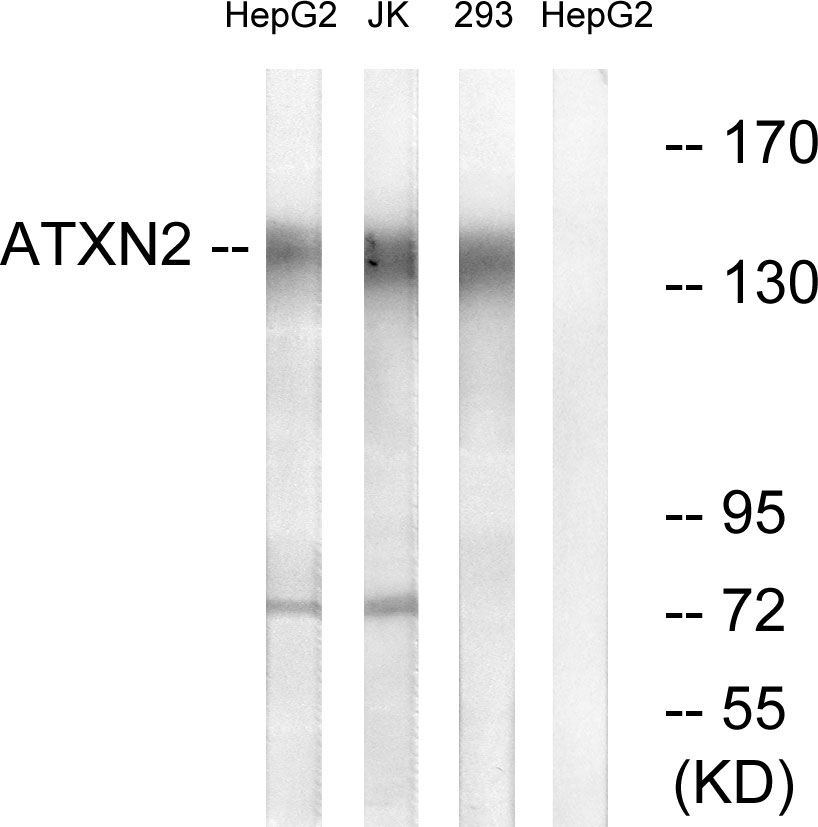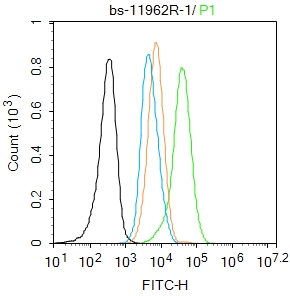ATXN2 antibody [HL1902]
GTX637651
ApplicationsImmunoFluorescence, Western Blot, ImmunoCytoChemistry, ImmunoHistoChemistry, ImmunoHistoChemistry Paraffin
Product group Antibodies
TargetATXN2
Overview
- SupplierGeneTex
- Product NameATXN2 antibody [HL1902]
- Delivery Days Customer9
- Application Supplier NoteWB: 1:500-1:3000. *Optimal dilutions/concentrations should be determined by the researcher.Not tested in other applications.
- ApplicationsImmunoFluorescence, Western Blot, ImmunoCytoChemistry, ImmunoHistoChemistry, ImmunoHistoChemistry Paraffin
- CertificationResearch Use Only
- ClonalityMonoclonal
- Clone IDHL1902
- Concentration1 mg/ml
- ConjugateUnconjugated
- Gene ID6311
- Target nameATXN2
- Target descriptionataxin 2
- Target synonymsATX2, SCA2, TNRC13, ataxin-2, spinocerebellar ataxia type 2 protein, trinucleotide repeat-containing gene 13 protein
- HostRabbit
- IsotypeIgG
- Protein IDQ99700
- Protein NameAtaxin-2
- Scientific DescriptionThis gene belongs to a group of genes that is associated with microsatellite-expansion diseases, a class of neurological and neuromuscular disorders caused by expansion of short stretches of repetitive DNA. The protein encoded by this gene has two globular domains near the N-terminus, one of which contains a clathrin-mediated trans-Golgi signal and an endoplasmic reticulum exit signal. The encoded cytoplasmic protein localizes to the endoplasmic reticulum and plasma membrane, is involved in endocytosis, and modulates mTOR signals, modifying ribosomal translation and mitochondrial function. The N-terminal region of the protein contains a polyglutamine tract of 14-31 residues that can be expanded in the pathogenic state to 32-200 residues. Intermediate length expansions of this tract increase susceptibility to amyotrophic lateral sclerosis, while long expansions of this tract result in spinocerebellar ataxia-2, an autosomal-dominantly inherited, neurodegenerative disorder. Genome-wide association studies indicate that loss-of-function mutations in this gene may be associated with susceptibility to type I diabetes, obesity and hypertension. Alternative splicing results in multiple transcript variants. [provided by RefSeq, Nov 2016]
- Storage Instruction-20°C or -80°C,2°C to 8°C
- UNSPSC12352203





